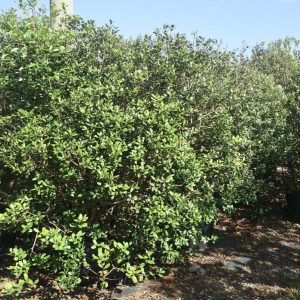Description
Handroanthus Pentaphylla, also known as the Rosy Trumpet Tree. Is a stunning flowering tree native to Central and South America. Member of the Bignoniaceae family that usually grows in tropical and subtropical areas worldwide.
Flowering and Foliage
The Handroanthus Pentaphylla (Rosy Trumpet Tree) tree’s crown is wide-spreading and dome-shaped. Which creates a beautiful and striking silhouette in the landscape. Its trunk is thick and sturdy, with a light brown to a grayish color; and it typically has a smooth texture.
The branches of the Rosy Trumpet Tree are thick and spreading, with a relatively open canopy. The leaves are compound, with five leaflets that are lance-shaped and slightly serrated. They are glossy and dark green, providing an attractive contrast to the vibrant flowers.
The flowers of the Rosy Trumpet Tree (Handroanthus Pentaphylla) are large, showy, and trumpet-shaped. With vibrant tones of pink to purple that stands out in any landscape. They bloom in late winter or early spring, providing a burst of color during the typically drab season. The fruit is a long, slender pod that reaches a length of 18 inches. And contains tiny seeds that travel away by the wind.
Soil Type and Plant Requirements
With a spread of up to 30 feet, this tree can grow to a maximum height of 40 to 50 feet. It prefers slightly acidic, well-drained soils with a pH range of 5.5 to 7.5. Although it may tolerate some shade, the Rosy Trumpet Tree (Handroanthus pentaphylla) prefers locations with full sun exposure.
This tree is commonly used in the landscape as a specimen tree or as a focal point in the landscape. It is best suited for USDA Zones 10–11, making it an excellent choice for the South Florida landscape. The Rosy Trumpet Tree is highly tolerant of salt and drought, making it an ideal option for coastal areas or areas with low rainfall.
Although the Handroanthus pentaphylla and Handroanthus heterophylla look similar, they are actually two separate kinds of trees. While they both belong to the Bignoniaceae family and have similar trumpet-shaped flowers, there are some differences in their physical characteristics. Handroanthus pentaphylla has five leaflets per leaf and a wider crown shape, while Handroanthus heterophylla has two or three leaflets per leaf and a narrower crown shape.
Landscape Applications
The growth rate of the Rosy Trumpet Tree (Handroanthus Pentaphylla) is moderate, and it performs well in the South Florida landscape with its attractive foliage and stunning flowers. It is a relatively low-maintenance tree, making it a great choice for homeowners or commercial landscapes.
Besides the Handroanthus Pentaphylla, (Rosy Trumpet Tree), is a stunning and resilient tree. That is ideal for the South Florida landscape. Its stunning flowers, glossy leaves, and low maintenance requirements make it a popular choice among landscape architects, and tree lovers.
Landscape References
It’s important to acknowledge that the Handroanthus Pentaphylla (Rosy Trumpet Tree) is not as common as Handroanthus Heterophylla (Pink Trumpet Tree). Which is native to Florida and widely used in the landscape.
If you are looking for Handroanthus Pentaphylla in Florida, it is most likely to be in botanical gardens or specialty nurseries such as TreeWorld Wholesale. That carry exotic and tropical trees. Some botanical gardens in Florida, such as the Naples Botanical Garden and the Marie Selby Botanical Gardens in Sarasota. Have Handroanthus Pentaphylla trees displays in their collections.
In order to avoid any confusion, it is necessary to clarify that the Handroanthus was once known as the Tabebuia tree.










